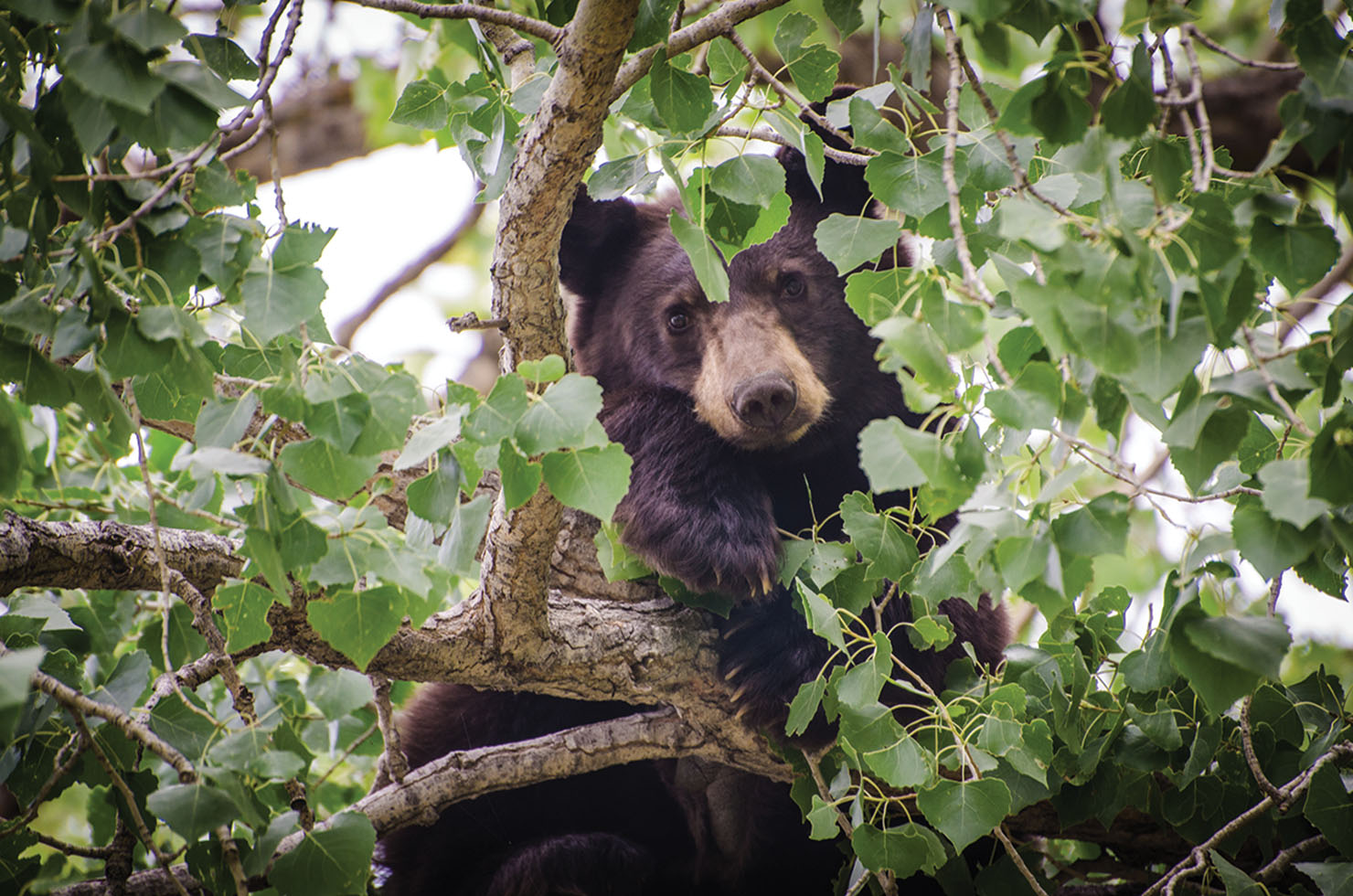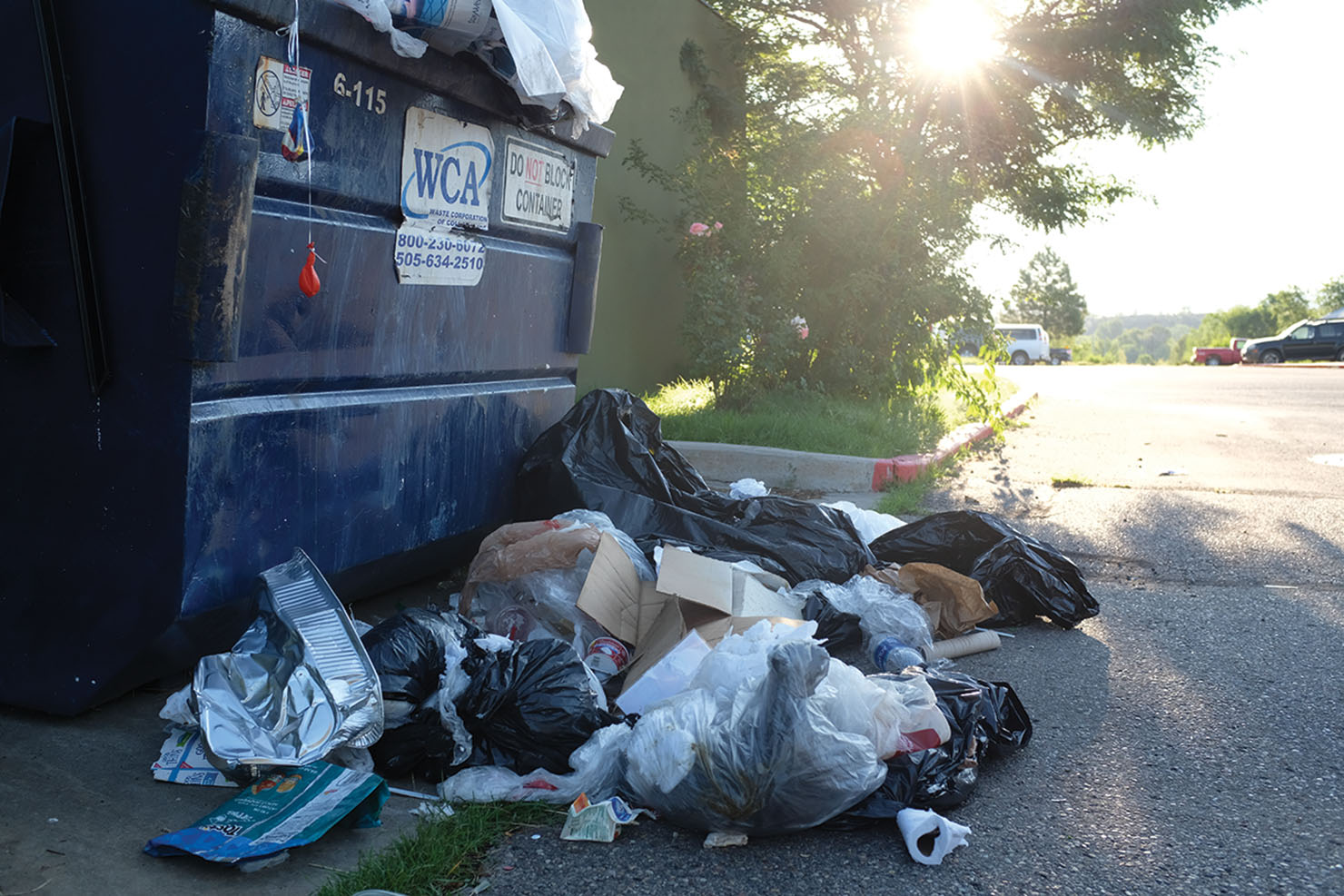This summer bears have been raiding trash cans across the Southern Ute Indian Reservation and throughout the region. The Southern Ute Indian Tribe recently hosted an informational presentation in conjunction with Bear Smart Durango, on Tuesday, August 8 to combat the problem. The presentation titled, Talking Trash: Human & Bear conflicts in the Southwest was led by Bear Smart Education Director, Karen Hickerson.
“We had an employee walk out of the Mouache-Capote Building and right into a bear,” said Don Brockus, Risk Coordinator for the Southern Ute Indian Tribe. “We thought there was some need for education.”
“This year has definitely been one of the worst,” Hickerson said in regards to heightened bear activity in urban areas. The Bear Smart motto is, ‘Helping people and bears coexist.’ “We’re proactive to make sure the bears stay bears and do not become too habituated,” Hickerson said.
According to the Southern Ute Wildlife Division, the bear problem is not limited to Tribal Campus, or downtown Durango. It is prevalent anywhere bears can find sources of food outside of their natural habitat.
“Ninety-five percent of the calls we get at Wildlife are ‘the bears are getting into the trash.’ What we really need people to do is remove the bear attractants, the food sources. That’s probably the biggest thing,” said Southern Ute Wildlife Division Director Steve Whiteman. “As long as those food sources are made inaccessible, then the bears will move on.”
“If the bear is a direct threat to a person, or property, as a last resort, we will set a trap and relocate.” Whiteman said.
One bear on Tribal Campus was very recently captured and relocated to Archuleta Mesa. “We’ve trapped and relocated a number of bears this summer,” Whiteman said. The number of phone calls from tribal members, and the number of trapped bears is a result of their persistent activity, he added.
“The Southern Ute Indian Tribe favors relocation over euthanization,” said Captain Charles Hamby of the Southern Ute Tribal Rangers. “They consider the bear a sacred animal. The Tribe is good about prevention, and they hold a lot of respect towards bears.”
The Southern Ute Wildlife Division, who explained that the ‘two strike’ rule doesn’t apply to bears on the reservation, also echoed this sentiment.
“Bears are very important to the tribal membership. We work in a culturally sensitive manner,” Whiteman said. “We work with the traditional cultural leaders, such as the Bear Dance Chief, and we get a blessing.” Trapped bears are blessed prior to relocation, if a bear is struck by a vehicle while crossing a road, the deceased bear is also blessed before being removed.
Bear conflicts on private land go to Colorado Parks and Wildlife, on Southern Ute land it comes to us Steve Whiteman explained. “We work together well, whether it’s bear conflict or any other issue.”
Bears are veracious eaters in the fall, often consuming up to 20,000 calories per day in preparation for winter. That can equate to a bear eating approximately seven pounds of acorns each day in the wild. While bears are primarily vegetarians, they do eat meat, or insects on occasion.
“Bird feeders are a gateway drug for bears,” Hickerson said. The best approach is to remove feeders from April 1 — Dec. 1, when bears are most active. The bird feeders are generally the first type of unnatural food that bears find.
“How do we coexist with the bears?” Karen asked. The answer is in eliminating the things that attract them, finding a balance. Black bears, whose historic range covers most of North America, come in different colors ranging from black to brown, blond and even a shade of cinnamon.
If you find yourself face to face with a bear, the best rule of thumb is to give the bear an exit, give it a way out. A few tips for bear prevention are to invest in bear resistant trashcans, and to clean out trashcans with bleach or ammonia from time to time. Setting up electric fencing helps, this can be particularly useful if you have fruit trees, bee hives or a chicken coop, which bears will see as an easy source of food. A BBQ grill that has been neglected, will attract unwanted bears, regular cleanings are advisable. Even dog food will attract bears.
Bears have an uncanny sense of smell, picking up odors from as far as two miles away, according to Bear Smart Durango. A bear’s sense of smell is 100 times that of a human. Try swapping out artificial bird feeders with natural flower boxes, hummingbirds will still make regular visits to harvest nectar from the flowers.
Bear’s have a very good memory, and often return to the same place they found food previously, but according to recent research conducted in the Durango area by Colorado Parks and Wildlife, bears will stay in their natural rangelands if it’s a good food year, if their foods are available naturally.
Due to an unusually late frost in the spring, natural food sources for bears are scarce. “This year, they are motivated,” Hickerson said.




